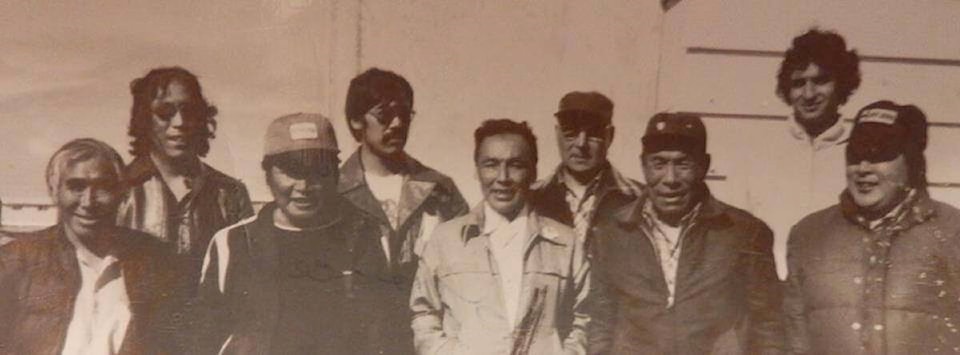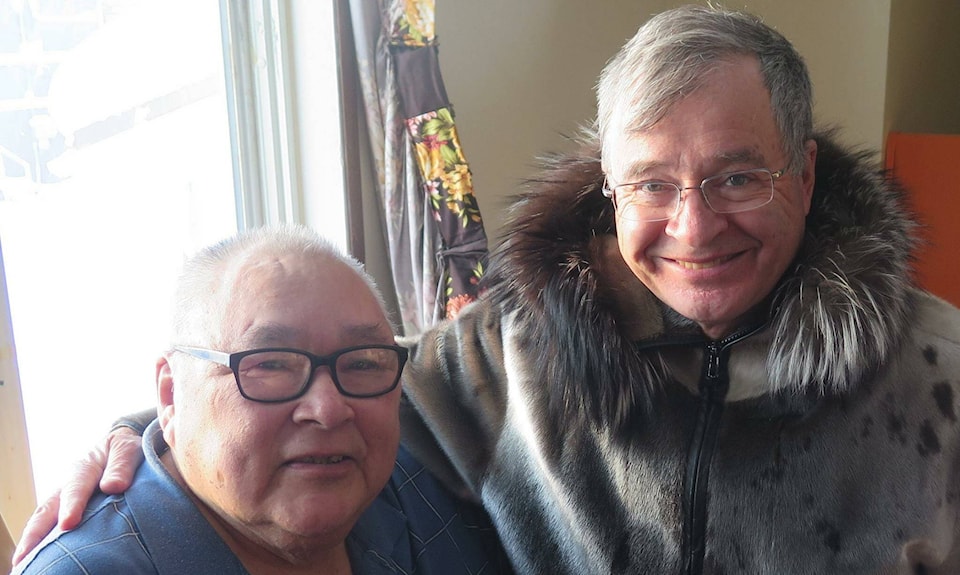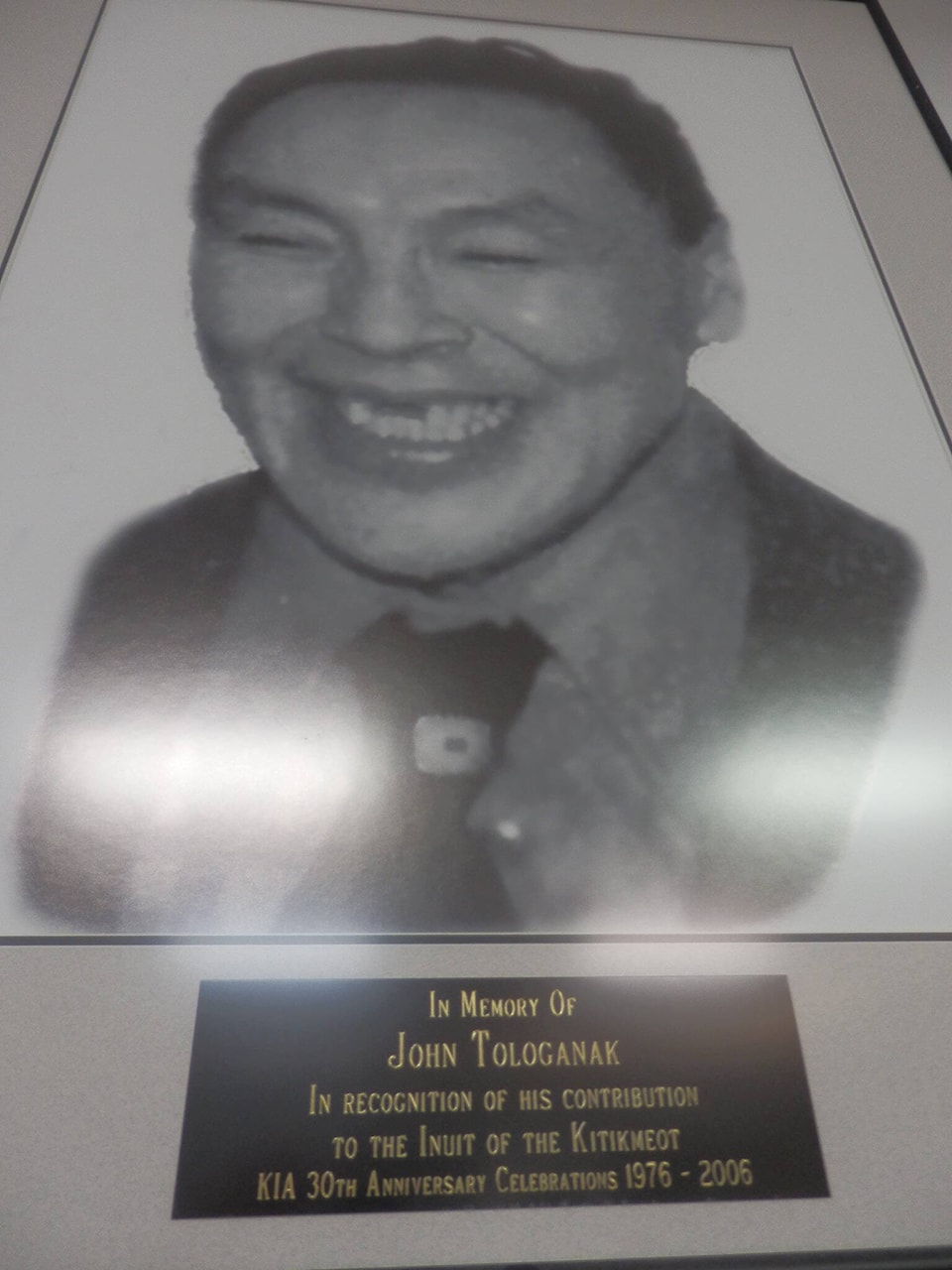KITIKMEOT STRONG!
Welcome to the Kitikmeot (Qitirmiut), land of the Inuinnait and Netsilinqmiut.
The Kitikmeot communities consist of Cambridge Bay (Iqaluktuutiak, the main hub for Kitikmeot); Kugluktuk; Umingmaktok (Bay Chimo); Kingaut (Bathurst Inlet); Gjoa Haven (Uqshuuqtuuq); Kugaaruk (Pelly Bay); and Taloyoak (Spence Bay).
We are the smallest region in Nunavut with a population of approximately 7,500.
The communities are fly-in only and in the short summer months we get shipping barges. The communities in Kitikmeot are served by one airline: Canadian North. The cost of flying is extremely high. Most of the communities do have stores to shop for food and goods, mainly Co-ops and Northern stores.
Gas prices are set each year by the Government of Nunavut. Each community in the Kitikmeot now has elementary and high schools, and also Nunavut Arctic College has small campuses that provide various training programs and courses, such as social worker program, teacher education program, culinary programs, sewing courses and many other courses.
Cambridge Bay being a larger populated community has a brand new campus with new student/family housing. The Government of Nunavut has regional offices in Cambridge Bay, which also serves the other communities.
Back in the ‘70’s the outpost camps of Bay Chimo and Bathurst Inlet were shut down and unable to deliver fuel etc. Residents of these two camps moved to Cambridge Bay and Kugluktuk. Umingmaktomiut and Kingaunmiut still travel to their homeland to camp and go hunting, but not as much caribou as the old days.
In the summer months, Inuit travel by boat and during the winter months they are able to travel by snowmobiles. It is one of Nunavut’s best kept secrets, most beautiful land. Although we live on an island in Cambridge Bay, it is one of the busiest communities and continues to grow. Cambridge Bay has the world class Canadian High Arctic Research Station (CHARS), a place to work and learn more about our land and sea, snow, ice, culture, wildlife, etc.
Many researchers and scientists travel from different countries from around the world and southern Canada to do science here. Even our students both from Kullik Ilihakvik and Kiilinik High School take field trips to CHARS campus. Hopefully we’ll have future scientists and professionals from both schools.
Cambridge Bay has the most beautiful heritage centre, presently situated at the Kiilinik High School library in the back section. The Pitquhirnikkut Ilihautiniq/Kitikmeot Heritage Society is very fortunate to have Elders employed at the centre, where traditional teachings and culture are taught and used daily. Many beautiful stories and history are found there and will carry on for generations and generations. This is where many sewing classes are done, where you can learn how to make kamiks, atigis and learn to speak Inuinnaqtut, which is the local dialect of the Inuinnait.
The high school students and staff are just steps away from the heritage centre so they often spend time with our Elders.
For residents needing medical attention, patients and escorts are sent to Yellowknife or Edmonton. Many cancer patients get treatment in Yellowknife and Edmonton. Kitikmeot residents are very fortunate to receive the highest level of medical attention from doctors and nurses in Yellowknife and Edmonton. Recently, a new boarding home was opened in Edmonton — Larga, now located in Leduc, close to the airport. There is also a Kitikmeot Larga boarding home in Yellowknife. Many expectant mothers and their spouses go to Yellowknife for the delivery of their babies.
We are very lucky to receive good medical attention from Yellowknife hospitals and clinics and also very good treatments received from Edmonton.
Housing is still one of Nunavut’s biggest problems. Lack of housing in the Nunavut communities needs to be and continues to be a priority for our governments. Cambridge Bay has a busy housing association that houses many Inuit and residents wishing to make it their place of residency, where many seek employment due to the lack of employment and training opportunities in the smaller surrounding communities and across Nunavut.
Land of the Inuinnait, where Inuinnaqtut is the dialect of Cambridge Bay, Kugluktuk, Umingmaktok and Kingaut. The language is slowly being lost, especially with the younger generation. The English language is spoken among the youth. Although language classes and courses at the schools and college are being offered, it’s not enough. We need more Inuinnaqtut being taught at all levels, not only at the schools and colleges, but also for many Inuit, especially for those who were sent to residential schools across Canada. As many of us Inuit struggle to speak or learn Inuinnaqtut, let us not give up. It must not be lost, and leaders must make this a priority as well as the lack of housing to ensure that our language is not lost.
It is one of life’s beautiful moments when you see children speaking in their own language — the language of their ancestors and Elders. Let us continue to be strong and to be proud that we are Inuit from Nunavut, one of Canada’s most beautiful lands.
Even though we live so far away from the capital city of Iqaluit and from the Government of Nunavut and from the Government of Canada, do not forget us in the Kitikmeot.


